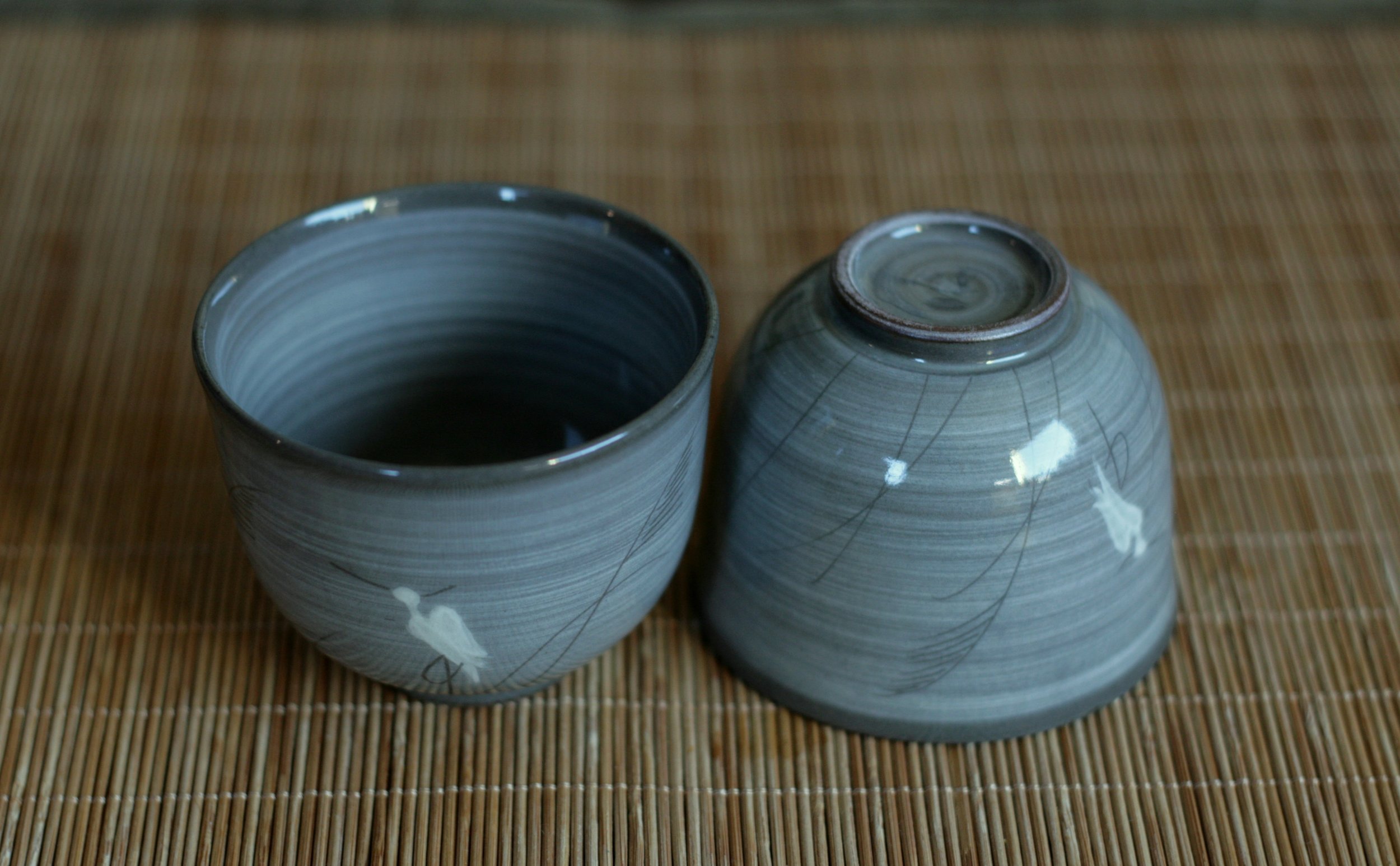 Image 1 of 7
Image 1 of 7

 Image 2 of 7
Image 2 of 7

 Image 3 of 7
Image 3 of 7

 Image 4 of 7
Image 4 of 7

 Image 5 of 7
Image 5 of 7

 Image 6 of 7
Image 6 of 7

 Image 7 of 7
Image 7 of 7








Utsutsugawa heron teacups from Rizaemon kiln (60)
Utsutsugawa heron teacups from Rizaemon kiln. 7.5cm x 6.5cm. Sold individually.
Utsutsugawa yaki – a Japanese ceramic tradition located in what is now Nagasaki on the island of Kyushu. Utsutsugawa yaki utilizes an iron rich red clay and is known for its refined stoneware. The history of the tradition dates back to the 17th century. The kiln most associated with this tradition today is the Gagyu kiln. The characteristic technique of this kiln is a type of hakeme, or brush work, using a white slip that gives the impression of tall grass blowing in the breeze. A white egret is often found standing serenely in the tall grass. Yokoishi Gagyu the 13th (b. 1925) is the most renowned practitioner of this style. His father re-discovered the hakeme technique in the late 19th century after it had been lost. Yokoishi Gagyu the 13th was designated an Intangible Cultural Property of Nagasaki Prefecture in 1975.
Utsutsugawa heron teacups from Rizaemon kiln. 7.5cm x 6.5cm. Sold individually.
Utsutsugawa yaki – a Japanese ceramic tradition located in what is now Nagasaki on the island of Kyushu. Utsutsugawa yaki utilizes an iron rich red clay and is known for its refined stoneware. The history of the tradition dates back to the 17th century. The kiln most associated with this tradition today is the Gagyu kiln. The characteristic technique of this kiln is a type of hakeme, or brush work, using a white slip that gives the impression of tall grass blowing in the breeze. A white egret is often found standing serenely in the tall grass. Yokoishi Gagyu the 13th (b. 1925) is the most renowned practitioner of this style. His father re-discovered the hakeme technique in the late 19th century after it had been lost. Yokoishi Gagyu the 13th was designated an Intangible Cultural Property of Nagasaki Prefecture in 1975.
Utsutsugawa heron teacups from Rizaemon kiln. 7.5cm x 6.5cm. Sold individually.
Utsutsugawa yaki – a Japanese ceramic tradition located in what is now Nagasaki on the island of Kyushu. Utsutsugawa yaki utilizes an iron rich red clay and is known for its refined stoneware. The history of the tradition dates back to the 17th century. The kiln most associated with this tradition today is the Gagyu kiln. The characteristic technique of this kiln is a type of hakeme, or brush work, using a white slip that gives the impression of tall grass blowing in the breeze. A white egret is often found standing serenely in the tall grass. Yokoishi Gagyu the 13th (b. 1925) is the most renowned practitioner of this style. His father re-discovered the hakeme technique in the late 19th century after it had been lost. Yokoishi Gagyu the 13th was designated an Intangible Cultural Property of Nagasaki Prefecture in 1975.